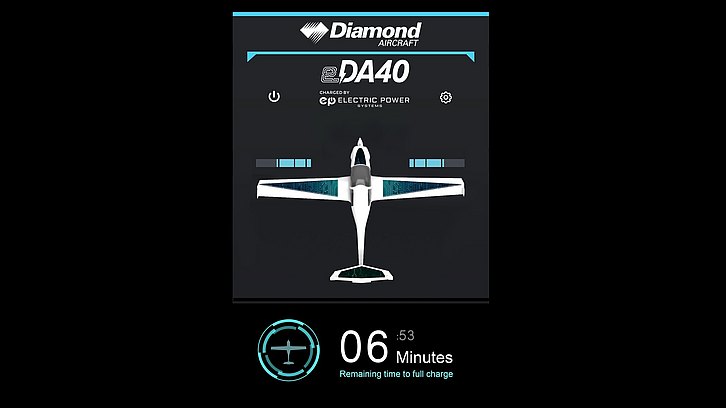Austria’s Diamond Aircraft launched its eDA40 last year, headed toward becoming “The first EASA/FAA (European Aviation Safety Agency/Federal Aviation Agency) Part 23 certified electric airplane with DC fast charging. Electric Power Systems’ DC fast charging system is capable of turning around a depleted aircraft in under 20 minutes.” Austria’s Diamond Aircraft has been developing environmentally responsible aircraft for the last several decades, starting with the hydrogen fuel cell-powered HK-36 in 2008. Diamond promoted its work with Boeing Phantom Works as emitting nothing more than waste heat and water vapor, demonstrating “technology that may result in cleaner APU’s (auxiliary Power Units) for commercial aircraft of the future.” Diamond went beyond that over the next decade, using the HK-36 as a testbed for various hybrid and electric power variants. In 2018, things had evolved to the HEMEP (Hybrid Electric Multi Engine Flying), a serial hybrid with two Siemens (now Rolls-Royce) motors on nose-mounted stalks powered by an internal combustion engine in the …
Could This Be the Ford Bi-Motor?
The original Ford Tri-Motor had a body by Ford and three Pratt & Whitney radial engines arrayed across its nose and wings. The Phantom Eye has a body by Boeing, and two 2.3-liter Ford engines fueled by the hydrogen the airplane carries in its bulbous fuselage. It first flew last June, but hit a snag on landing, or at least dug in and twisted a landing skid, rendering it inoperable until this year. Boeing performed software and hardware upgrades, including strengthening the landing gear. Its second flight was a big success with a successful landing – a great one even, since the airplane is reuseable. This is particularly helpful for Boeing, which funded the project out of its own pocket. The company commented on the expectations raised by the flight: “Boeing’s liquid hydrogen-powered Phantom Eye unmanned airborne system completed its second flight Feb. 25, demonstrating capabilities that will allow it to perform intelligence, surveillance and reconnaissance (ISR) missions for up …
Phantom Eye Flies, Breaks a Leg
Boeing’s Phantom Eye, hydrogen-powered HALE (High Altitude Long Endurance) surveillance aircraft rose from its launch cart at 6:22 a.m. Pacific time on June 1, then climbed to an altitude of 4,080 feet on its 28 minute maiden flight. Phantom Eye is meant to be an autonomous craft with four-day mission capabilities. The bulbous front fuselage houses two spherical hydrogen tanks that feed the Ford 2.3 liter engines on the 150-foot, high-aspect ratio wings. The engines, triple turbocharged at altitude, emit only water vapor, making spying a little cleaner. Note the web-like spinning of carbon fiber strands making up the fuselage. This highly-automated manufacturing process probably emulates that used on the company’s 787 Dreamliner and reflects the high-technology methods we can expect in the future. Phantom Eye’s landing was not quite as elegant as its takeoff, one landing gear breaking after digging into the Edwards Air Force base lakebed. Despite the glitch, Boeing remained upbeat about its new bird. “This day …

